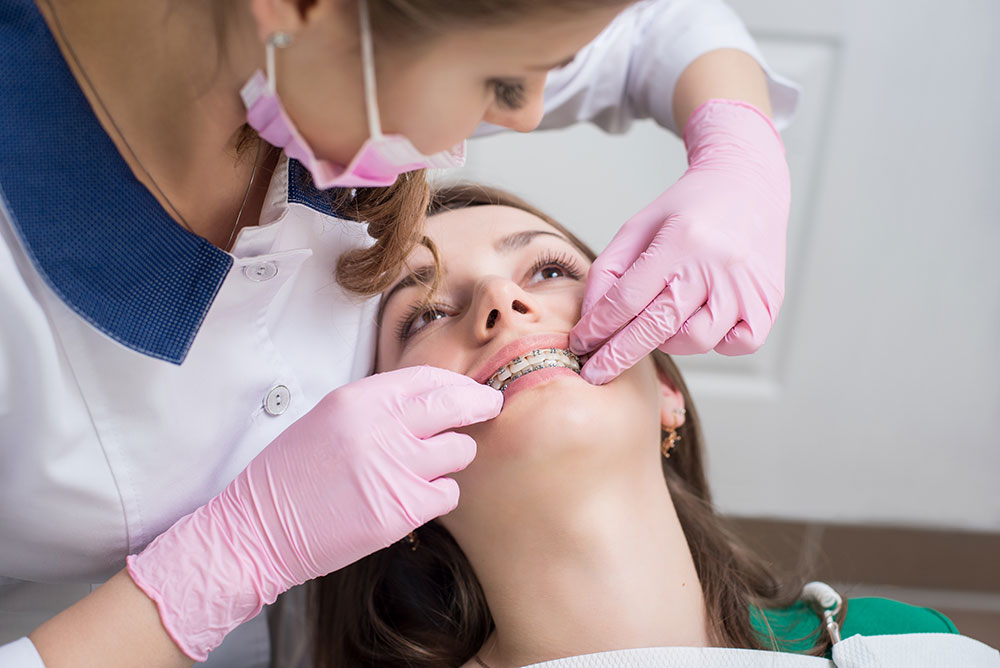The Ultimate Guide To Legacy Orthodontics
The Ultimate Guide To Legacy Orthodontics
Blog Article
10 Simple Techniques For Legacy Orthodontics
Table of ContentsThe Definitive Guide to Legacy OrthodonticsThings about Legacy OrthodonticsThe Main Principles Of Legacy Orthodontics Some Known Questions About Legacy Orthodontics.About Legacy Orthodontics
In addition, we supply flexible treatment timetables, adaptable settlement options and a fun, satisfying experience.An orthodontist is a dentist trained to detect, avoid, and treat teeth and jaw irregularities. Orthodontists work with individuals of all ages, from kids to grownups.
Malocclusion, or misaligned teeth, can lead to dental concerns, consisting of dental caries, gum tissue disease, and challenging or uncomfortable chewing. However not everybody is born with straight teeth. If you have a poor bite or huge areas between your teeth, you may wish to seek advice from a dental practitioner focusing on orthodontic treatment.
How Legacy Orthodontics can Save You Time, Stress, and Money.
( Photo Debt: DigitalVision/Getty Images) Orthodontists use taken care of and removable dental tools, like dental braces, retainers, and bands, to alter the placement of teeth in your mouth. Orthodontic treatment is for oral irregularities, including: Jagged teethBite troubles, like an overbite or an underbiteCrowded teeth or teeth that are also much apartJaw misalignmentThe objective of orthodontic therapy is to improve your bite.
While you could think of orthodontists as generally for children or teens that need braces, they can remedy oral problems at any age. Orthodontists attend university, dental school, and orthodontic school.
All orthodontists are dental professionals, however not all dental experts are orthodontists. Orthodontic residency programs offer intensive, concentrated direction for oral specialists. They concentrate on 2 areas: Just how to appropriately and safely move teeth Just how to correctly direct advancement in the teeth, jaw, and faceOnce an orthodontist has actually completed training, they have the alternative to end up being board accredited.
Legacy Orthodontics for Beginners
Imbalance, or malocclusion, is one of the most usual reason people see an orthodontist. It is genetic and is the result of size distinctions in between the top and lower jaw or in between the jaw and teeth. Malocclusion results in tooth overcrowding, an irregular jaw, or uneven bite patterns. Malocclusion is generally treated with: Your orthodontist affixes steel, ceramic, or plastic square bonds to your teeth.
If you have just small malocclusion, you might have the ability to make use of clear dental braces, called aligners, as opposed to traditional braces (https://www.sooperarticles.com/authors/788744/brian-mccune.html). Some individuals require a headgear to assist relocate teeth into line with pressure from outside the mouth. After braces or aligners, you'll need to put on a retainer. A retainer is a personalized gadget that maintains your teeth in position.
They can create additional area in the mouth without having to pull teeth. Orthodontists make use of cords, medical screws, or plates to sustain your jaw bone.
You may need to see an orthodontist if you have: Crowding or otherwise adequate room for all of your teethOverbite, when your upper teeth come your bottom teethUnderbite, when your base teeth are as well much forwardSpacing or issues with gapsCrossbite, which is when your upper teeth fit behind your base teeth when your mouth is closedOpen bite or an upright void in between your front bottom and upper teethMisplaced midline, when the facility of your bottom and top teeth don't line up Fixing a dental malocclusion can: Make attacking, chewing, and talking easierImprove the proportion of our face and your total appearanceEase discomfort from temporomandibular joint problemsDifferent your teeth and make them much easier to cleanse, aiding avoid dental cavity or dental caries It's often a dental practitioner who initially notices misaligned teeth during a regular exam.
An Unbiased View of Legacy Orthodontics

Throughout your very first orthodontic examination, you'll likely have: An oral examPhotos taken of your face and smileDental X-raysPanoramic (360 level) X-rays of your face and headImpressions to develop mold and mildews of your teethThese tests will certainly assist useful link your orthodontist understand how to proceed with your treatment. orthodontist. An orthodontist is a dental professional that's had training to treat your teeth and jaw
Orthodontists might do surgical treatment, exams,X-rays,and even more to assist you acquire an extra comfortable, much healthier smile. An orthodontist is focused on your bite, so something like a chipped tooth would be handled by a dental professional. Orthodontists are dentists however not all dentists are orthodontists. Orthodontists are concentrated on your bite, or the means your teeth meshed, and the straightness of your teeth.
Ever before asked yourself exactly how celebs constantly appear to have perfectly straightened teeth? Orthodontists are oral professionals who concentrate on correcting abnormalities in the teeth and jaws.
The Ultimate Guide To Legacy Orthodontics

, orthodontists have a diverse toolkit at their disposal. These reliable braces make use of a system of brackets bound to the teeth and connected by cables.
Clear aligners, like Invisalign, are a preferred choice for patients seeking an extra very discreet treatment choice. These detachable trays are custom-made to gradually change the teeth's placement. Headwear may be utilized together with dental braces or aligners to apply additional targeted pressures, especially for correcting jaw disparities. In situations of slim jaws, palatal expanders can be utilized to create room for proper tooth alignment.
Report this page